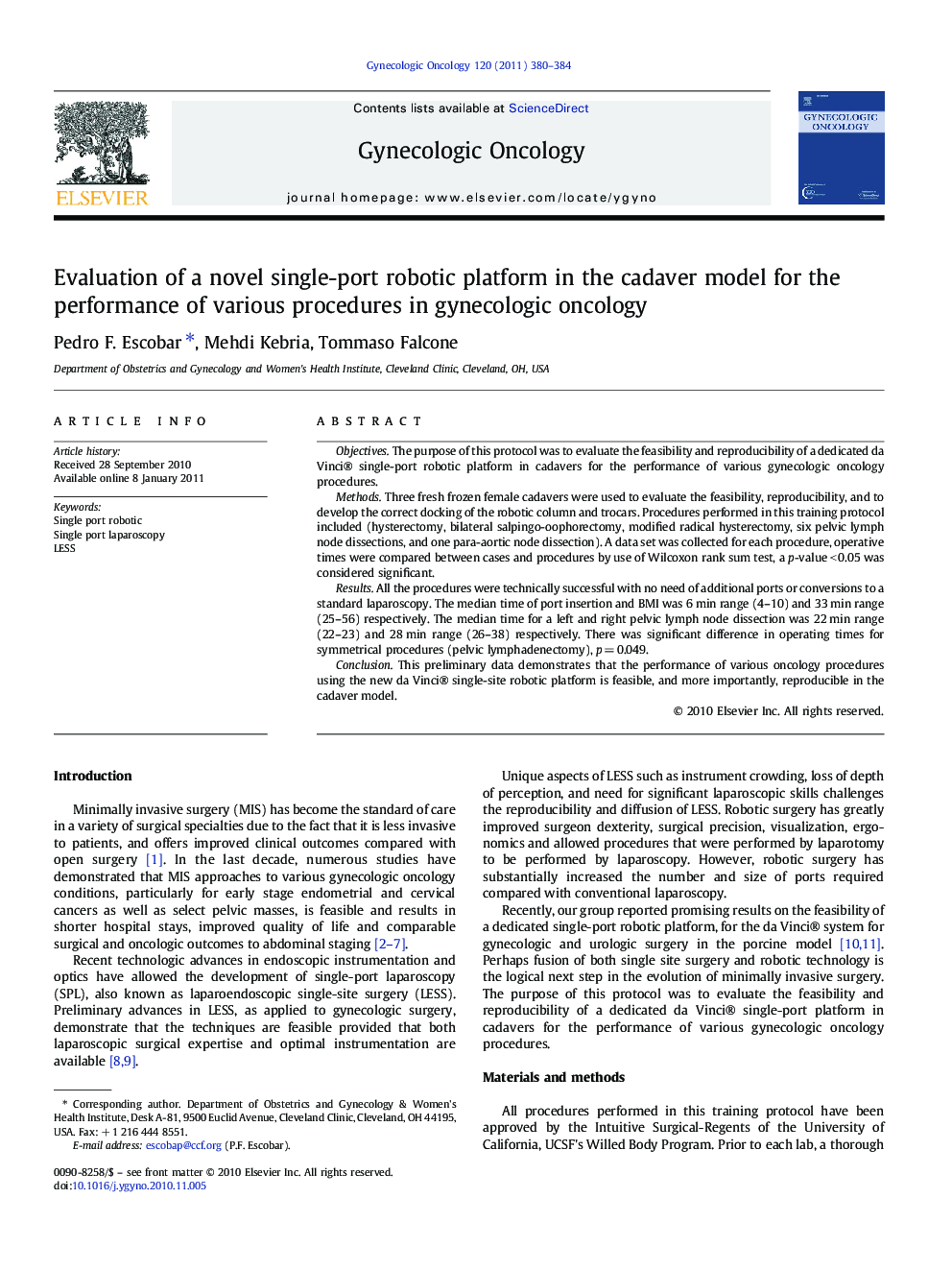| Article ID | Journal | Published Year | Pages | File Type |
|---|---|---|---|---|
| 3943990 | Gynecologic Oncology | 2011 | 5 Pages |
ObjectivesThe purpose of this protocol was to evaluate the feasibility and reproducibility of a dedicated da Vinci® single-port robotic platform in cadavers for the performance of various gynecologic oncology procedures.MethodsThree fresh frozen female cadavers were used to evaluate the feasibility, reproducibility, and to develop the correct docking of the robotic column and trocars. Procedures performed in this training protocol included (hysterectomy, bilateral salpingo-oophorectomy, modified radical hysterectomy, six pelvic lymph node dissections, and one para-aortic node dissection). A data set was collected for each procedure, operative times were compared between cases and procedures by use of Wilcoxon rank sum test, a p-value < 0.05 was considered significant.ResultsAll the procedures were technically successful with no need of additional ports or conversions to a standard laparoscopy. The median time of port insertion and BMI was 6 min range (4–10) and 33 min range (25–56) respectively. The median time for a left and right pelvic lymph node dissection was 22 min range (22–23) and 28 min range (26–38) respectively. There was significant difference in operating times for symmetrical procedures (pelvic lymphadenectomy), p = 0.049.ConclusionThis preliminary data demonstrates that the performance of various oncology procedures using the new da Vinci® single-site robotic platform is feasible, and more importantly, reproducible in the cadaver model.
Research Highlights►The novel robotic single port platform is ergonomic and triangulation easily achieved. ►Single-Port Robotics is feasible and reproducible in the cadaver model. ►Further work is needed to better define the ideal operative procedures for single-site surgery.
